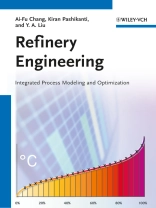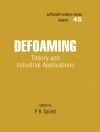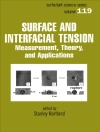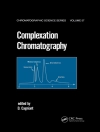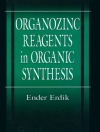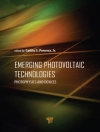A pioneering and comprehensive introduction to the complex subject of integrated refinery process simulation, using many of the tools and techniques currently employed in modern refineries.
Adopting a systematic and practical approach, the authors include the theory, case studies and hands-on workshops, explaining how to work with real data.
As a result, senior-level undergraduate and graduate students, as well as industrial engineers learn how to develop and use the latest computer models for the predictive modeling and optimization of integrated refinery processes.
Additional material is available online providing relevant spreadsheets and simulation files for all the models and examples presented in the book.
Зміст
PREFACE
CHARACTERIZATION, PHYSICAL AND THERMODYNAMIC PROPERTIES OF OIL FRACTIONS
Crude Assay
Pseudocomponent Generation Based on Boiling-Point Ranges
Workshop 1.1 – Interconvert Distillation Curves
Workshop 1.2 – Extrapolate an Incomplete Distillation Curve
Workshop 1.3 – Calculate Me ABP of a Given Assay
Workshop 1.4 – Duplicate the Oil Fraction in Aspen HYSYS/Refining
Property Requirements for Refinery Process Models
Physical Properties
Process Thermodynamics
Miscellaneous Physical Properties for Refinery Modeling
Conclusions
Nomenclature
References
ATMOSPHERIC DISTILLATION UNIT
Introduction
Scope of the Chapter
Process Overview
Model Development
Feed Characterization
Data Requirements and Validation
Representative Atmospheric Distillation Unit
Building the Model in Aspen HYSYS
Results
Model Applications to Process Optimization
Workshop 2.1 – Rebuild Model Using ‘Backblending’ Procedure
Workshop 2.2 – Investigate Changes in Product Profiles with New Product Demands
Conclusions
Nomenclature
References
VACUUM DISTILLATION UNIT
Process Description
Data Reconciliation
Model Implementation
Model Applications to Process Optimization – VDU Deep-Cut Operation
Workshop – Using Aspen HYSYS/Refining to Implement Deep-Cut Operation
References
PREDICTIVE MODELING OF THE FLUID CATALYTIC CRACKING (FCC) PROCESS
Introduction
Process Description
Process Chemistry
Literature Review
Aspen HYSYS/Petroleum Refining FCC Model
Calibrating the Aspen HYSYS/Petroleum Refining FCC Model
Fractionation
Mapping Feed Information to Kinetic Lumps
Overall Modeling Strategy
Results
Model Applications to Process Optimization
Model Application to Refinery Production Planning
Workshop 4.1: Guide for Modeling FCC Units in Aspen HYSYS/Petroleum Refining
Workshop 4.2: Calibrating Basic FCC Model
Workshop 4.3: Build Main Fractionator and Gas Plant System
Workshop 4.4: Model Applications to Process Optimization -Perform Case Study to Identify Different Gasoline Production Scenarios
Workshop 4.5: Model Application to Production Planning- Generate DELTA-BASE Vectors for Linear-Programming (LP)-Based Production Planning
Conclusions
Nomenclature
References
PREDICTIVE MODELING OF THE CONTINUOUS CATALYST REGENERATION (CCR)
REFORMING PROCESS
Introduction
Process Overview
Process Chemistry
Literature Review
Aspen HYSYS/Petroleum Refining Catalytic Reformer Model
Thermophysical Properties
Fractionation System
Feed Characterization
Model Implementation
Overall Modeling Strategy
Results
Model Applications to Process Optimization
Model Applications to Refinery Production Planning
Workshop 5.1: Guide for Modeling CCR Units in Aspen HYSYS/Petroleum Refining
Workshop 5.2: Model Calibration
Workshop 5.3: Build a Downstream Fractionation
Workshop 5.4: Case Study to Vary RON and Product Distribution Profile
Conclusions
Nomenclature
References
PREDICTIVE MODELING OF THE HYDROPROCESSING UNITS
Introduction
Aspen HYSYS/Refining HCR Modeling Tool
Process Description
Model Development
Modeling Results of MP HCR Process
Modeling Results of HP HCR Process
Model Applications to Process Optimization
Model Application – Delta-Base Vector Generation
Conclusion
Workshop 6.1 – Build Preliminary Reactor Model of HCR Process
Workshop 6.2 – Calibrate Preliminary Reactor Model to Match Plant Data
Workshop 6.3 – Model Applications to Process Optimization
Workshop 6.4 – Connect Reactor Model to Fractionator Simulation
Nomenclature
References
Про автора
Ai-Fu Chang received his Ph.D. in the Department of Chemical Engineering at Virginia Polytechnic Institute and State University in September, 2011. He received his B.S. in chemical engineering from National Taiwan University in 2001. He completed his doctoral dissertation on integrated process modeling and product design of biodiesel manufacturing, and refinery reaction and fractionation systems. The latter was the basis of this textbook. He has worked on several industrial modeling projects, including poly(acrylonitrile-vinyl acetate), hydrocracking, and biodiesel. These projects were collaborative efforts between Virginia Tech, Aspen Technology, and industrial manufacturers. He is currently employed by Chevron Phillips Chemical Company.
Kiran Pashikanti was a Ph D student in the Department of Chemical Engineering at Virginia Tech. He received his B.S. in chemical engineering from Virginia Commonwealth University in 2005, and his Ph.D. in chemical engineering from Virginia Tech in September, 2011. He has worked on several industrial modeling projects on integrated modeling of reaction and fractionation systems, and of carbon-dioxide capture processes. This textbook grows out of his doctoral dissertation on the predictive modeling of fluid catalytic cracking and catalytic reforming processes. He is currently employed by Chevron Phillips Chemical Company.
Prof. Y.A. Liu is the Frank C. Vilbrandt Endowed Professor of Chemical Engineering at Virginia Polytechnic Institute and State University. He received his B.S. (1967), M.S. (1970), and Ph.D. (1974) degrees from National Taiwan University, Tufts University and Princeton University, respectively. He has published numerous papers and eight books, including four pioneering chemical engineering textbooks on artificial intelligence in chemical engineering (with Thomas E. Quantrille) and on neural networks in bioprocessing and chemical engineering (with D. Richard Baughman). Professor Liu’s contributions to chemical engineering teaching and research have been recognized by university, national and international awards and he is a Fellow of the American Institute of Chemical Engineers. For his contributions to teaching, research and industrial outreach, he received the Virginia Outstanding Faculty Award from Governor Jim Gilmore in 2000. He also received the National Friendship Award from China’s Premier Zhu Ronjie in 2000.
